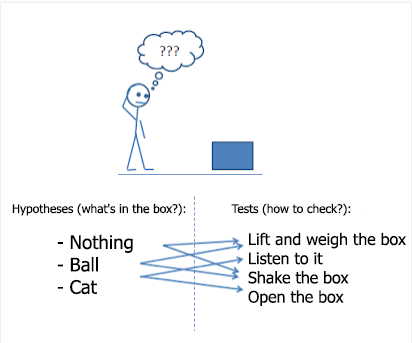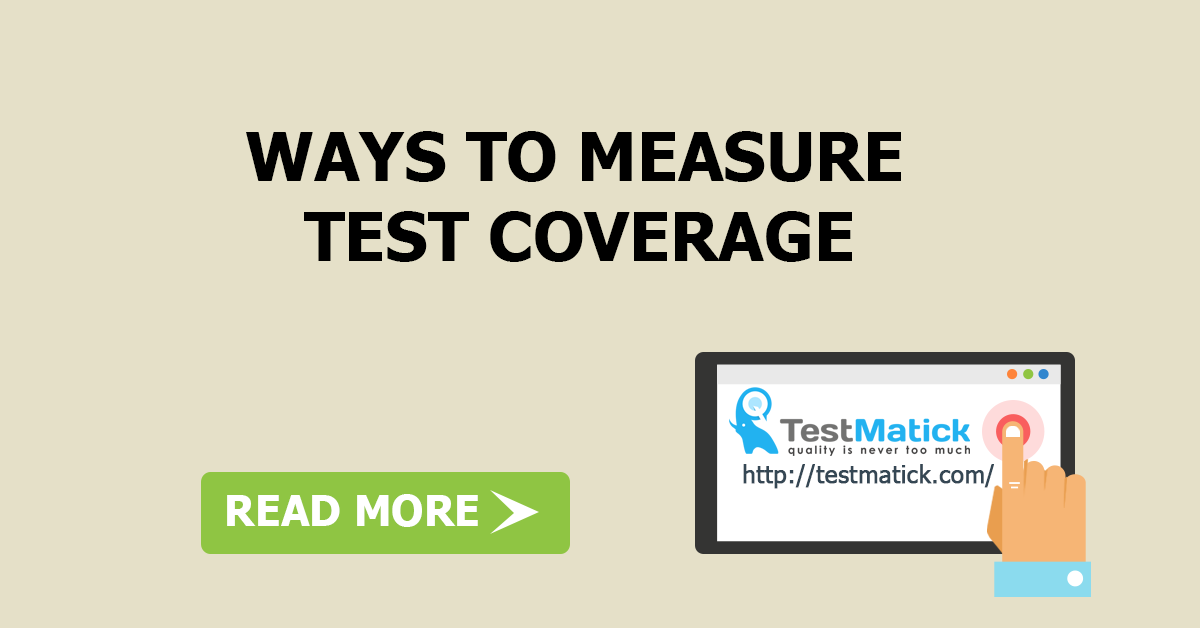As we know, Test Coverage is the most important metric of software quality assurance. It has quite a valuable structure which is measured by a percentage and shows a current level of thickness of test coverage, determined technical requirements or execution of written software code.

How to Measure a Box
Is It Necessary to Measure?
All testing metric is just a waste of time and energy. During this time we can analyze a product, find bugs, write automation tests, etc.
But still what “magical” value have test coverage metric, on which testers sometimes spend a huge amount of their work time?
- Finding “dead” areas. Of course, everyone wants to know what part of software has problems;
- According to the results of testing, we rarely get 100% development efficiency. But then what is “to fix” and to improve? What approach is better? How much has a level of efficiency increased? How soon will we get mentioned 100%? All these conclusions are in some way connected with clarity and comprehensibility of a process of testing and the answers are hidden in quality assurance;
- Paying attention. Let’s imagine that your build has about 40 functional levels. When a new version is released, you start to slowly test the first one and immediately find bugs, some shifted pixels and other strange things in it. The time for testing has passed, this functionality has been thoroughly tested but what to do with the rest 40? And it’s evaluation of complete coverage that helps us to completely prioritize the tasks depending on the amount of work and time determined by a client.

The Logic of the Test Coverage
How to Properly Measure?
Before applying a chosen metric, you should understand how you will use it. Firstly, answer this question – it seems that you will find out what to do.
In fact, there are two biggest and efficient approaches to measure the level of covering a product with automated tests: method of the covering of determined requirements (in other words, something similar to black-box testing), work with software code (classical white-box testing).
- Covering of requirements is a level of measuring the test product both for testing performance and non-functional requirements, determined before developed software in a form of creating trace matrixes;
- Test coverage is a method of analysis of coverage of developed code with test cases in a form of searching for non-checked on the stage of testing the parts of the developed software product.
Test coverage of software code is the most important metric for providing complete quality assurance in the process of working with the test environment, especially when we talk about testing a product with very complex logic and length of the written code.
Code testing is usually performed with the help of wide range of available functional tools, which will help to find out what branches of software code have been tested and what has not been noticed in the process of automated testing.
The most popular are the following tools:
Thanks to the analysis of code coverage, we can completely create a “thick” basis of automated tests for software component testing which was passed to the QA department for a thorough analysis and testing. While creating a base of automated tests, we can exactly measure a thickness of coverage of executed code of tested utility (it’s the answer to the question – what amount of testing, I perform automated testing).

Process of Test Coverage
Besides that, in case of completely detailed analyses of performed testing, quality assurance team can easily measure thickness and quality of test coverage of separate parts of a build and/or its components (the answer to this question ¬– in what amount and what exactly was tested).
It means that actively using this method, we will understand for what types of testing new test cases must be designed and for what types we should just delete repeated testing which will hugely decrease the time for a final release and also will decrease a budget for development. And the quality of code will improve, of course.
Test coverage of code is a work which clearly shows in what percentage a written program code was tested.
Method of test coverage of software product is one of the first methods for global systematic testing. A record on its birthday has been maintained since 1963 when first materials on the correctness of writing the documents for testing technical products were published.
Types of Measuring the Test Coverage of a Product
Today there are some types of measuring the test coverage, and the main of them are:
- Work with operators – was every line of program code performed according to technical task and completely tested for its functionality?
- The thickness of coverage of determined conditions – were all solutions and advances performed and tested?
- Testing the paths – were all possible paths of executing a program code checked and absolutely qualitatively tested?
- Work with functions – were all possible values analyzed and performed?
- Testing program combinations – were all determined conditions and technical combinations tested and performed according to determined technical documentation.
In the process of quality assurance of test coverage of a program, we should use special settings, utilities and even whole libraries which run and function in the environment, to completely and qualitatively test performance, functionality and quality of any written and built-in functions, logic and technical possibilities.
Such work not only positively influences the total functionality of the developed product but also allows developers to check the completeness of functions and term of a code which, in case of normal work of software, are rarely used or play only secondary roles.
Quality control companies can use results of testing for completely thick coverage of development with additional tests or test data during this process.
Implementation
Usually, written code is always supported by tests, which task is to help this idea to come true.
Such report allows conducting completely qualitative analyses to find out whether a product has non-executed parts of the code. If it does, test coverage is widened and all written testing is performed the second time.
A basic target of such approach is to obtain a completely wide set of tests for performing regressive testing, in the process of which the functionality of every line of written code is thoroughly tested.
A boundary covering the written code with tests is expressed in the proportion of ready and tested functionality.
For example, “we performed testing on 60 % of a code”. A sense of such expression is in what way the criterion of quality assurance of a product was used. For example, 60% of testing of paths will be better than 60% of the work of operators.
A procedure for covering the development with tests is actually a process of white-box testing.
The tested software is collected in one virtual environment, it’s executed in order to find flaws or errors. Such a method allows developers and QAs to find parts of a platform which, in case of proper execution of a platform, are used quite rarely or are never used.
In fact, all tools and connected libraries for complete coverage of code need huge expenses for total performance which can’t be actually used in case of ordinary functioning of the software. It means that they may be performed only under special conditions.

Umbrellas
Control Testing
Development of tests on the basis of control is the most popular method of testing of mentioned white-box testing, which is developed on the base of the logic of performing the software code and development of executed test-case for complete coverage of these paths.
A basis for such an approach is the development of charts of control flows which consists of such parts:
- Block of work – 1 entry point and 1 exit point;
- Alternative point – 1 exit point and more than two exit points;
- Merge point – 2 and more entry points, 1 exit point.
In order to perform testing of control flows, QAs use the following levels of tested coverage:
| Boundary | Name | Short description |
|---|---|---|
| Zero level | – | Test everything we see and leave the rest for a client to test |
| First level | Work with operators | Every operator must be performed at least one time |
| Second level | Work with alternative parts (branches) | The alternative unit must be performed at least one time |
| Third level | Work with conditions | There is a possibility to create conditions and alternative ways for every tested case |
| Fourth level | Work with numerous conditions | The complete performance of alternatives, conditions and logic of alternatives |
| Fifth level | Unlimited number of paths | Even if a number of paths is unlimited, they still must be performed |
| Sixth level | Work with paths | Every path must be thoroughly tested |
Working on such table (method), you as QA, can qualitatively plan your future level of test coverage.
So, to conclude analyses of “perfect” test coverage, we can highlight aspects to which you should always pay your attention:
- General functionality;
- Usability;
- Technical security;
- Reliability;
- Accompaniment.
Of course, every mentioned criterion has a range of additional items and sub-items. And we can add various characteristics and advances which were taken into account on your project to this list of peculiarities.
Every advance is unique and needs the complete individual approach to the process of creating a complete test coverage. And yet there is no universal handbook on the development of multifunctional test coverage.
But every self-respecting tester should understand how to test one or another system. He or she should rapidly use available functionality and also given resources and of course, focus on testing the most vulnerable parts of the developed product.










Leave A Comment